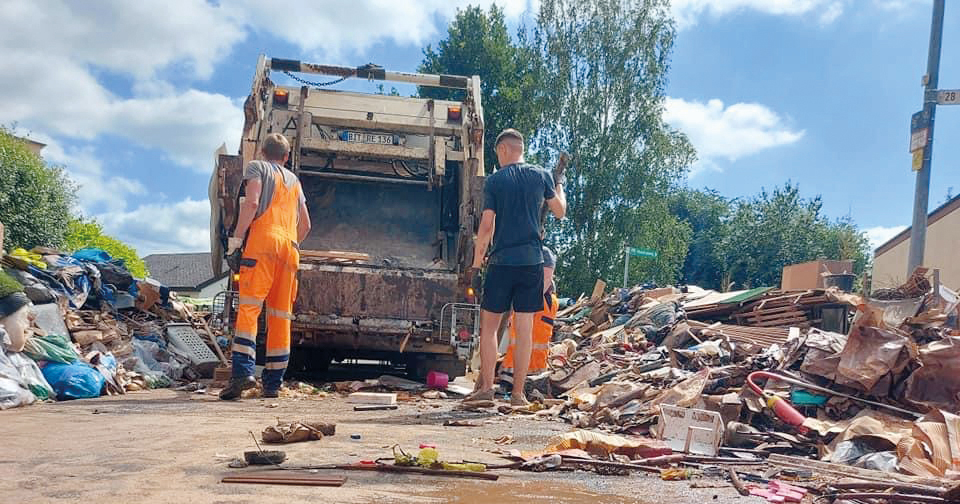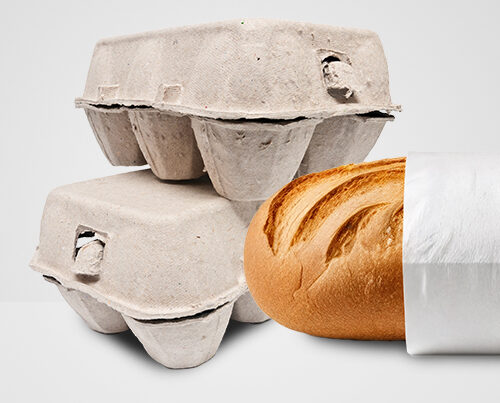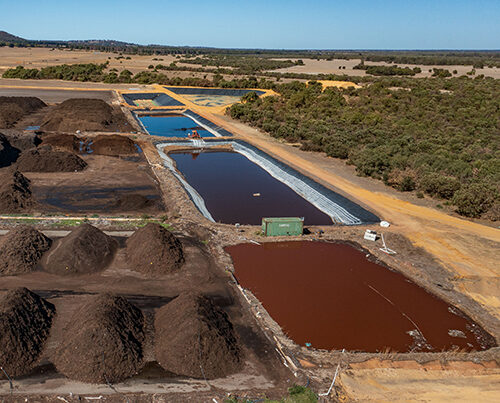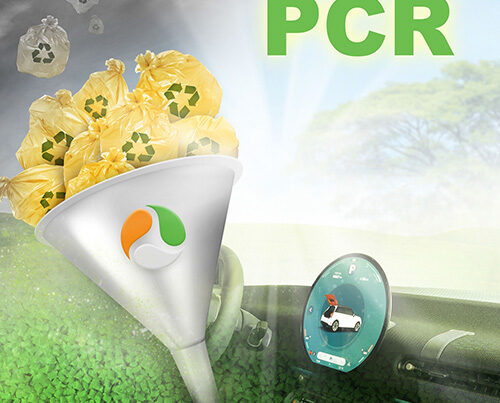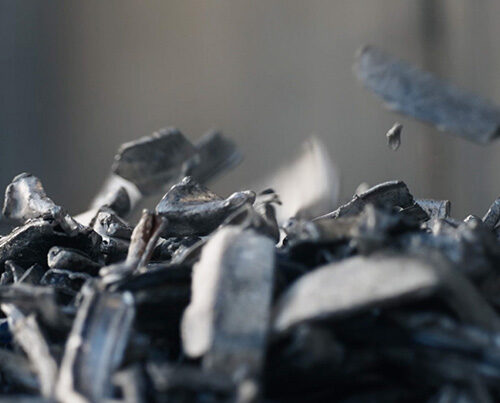This was the fairly nondescript statement given by the circular economy experts, Thinking Circular, in their report to sum up one of the key assessments of the flood disaster management process during the initial few months following the flooding of Germany’s Ahr Valley in July 2021. This 100-page report, which was published on 01 March 2022 and co-funded by AWB (the District of Ahrweiler’s waste management business), shines a light on the work carried out by the waste management firms and other organisations during and after the floods that hit the district last year.
Just under 100,000 tonnes of household and bulky waste were sent to the Eiterköpfe landfill – not as a temporary storage space but on a permanent basis. A waste management route that has been forbidden in Germany since the 1980s. Which explains why, since last summer, experts have been describing it as “a return to the 60s and 70s of the last century”.
“97,000 tonnes of the 300,000 tonnes of flood waste handled in the months running up to October 2021 ended up at the Eiterköpfe landfill in Ochtendung.”
Disposal rather than recycling? How did that happen?
A piece published by the German Press Agency dpa on 21 July 2021 provided an explanation: “The work to remove the mountains of waste in the flooded areas has begun. The SGD Nord [Structural & Licensing Directorate North] has issued a certificate of exemption – at short notice – to the Eiterköpfe landfill in the District of Mayen-Koblenz permitting it to accept household and bulky waste,” Environment Minister Anne Spiegel (Green Party) announced on Thursday during a special session of three state parliamentary committees in Mainz. “The waste management businesses have also specified other storage areas in consultation with SGD Nord.
The Eiterköpfe landfill is also allowed to accept oil-contaminated earth. A solution is yet to be found for the e-waste. SGD will also clarify what should be done with the large number of wrecked cars.”
AZV (Abfallzweckverband Rhein-Mosel-Eifel), a large municipal waste management firm based in the north of Rhineland-Palatinate and the operator of the Eiterköpfe landfill, belongs to the District of Mayen-Koblenz, the District of Cochem-Zell and the City of Koblenz. According to AZV, it is responsible for managing waste across an area of 1,640km² with around 400,000 inhabitants.
Put in a nutshell, Mainz’s Environment Ministry and the lower-ranking authorities obviously acted according to the motto: make sure the waste disappears as quickly as possible – let others deal with the impact this will have on climate change, without taking any action ourselves. By the way, there were still no hits in August 2022 for the search term “Eiterköpfe” on the website run by the Ministry for Climate Action, Environment, Energy and Mobility of the German state of Rhineland-Palatinate.
Any questions levelled at officials about whether such a decision actually complies with the various waste management laws have simply been shrugged off with the explanation they were facing a disaster in the Eifel region and Ahr Valley at the time. Questions, for example, about the ‘AbfAblV’ [Ordinance on the Disposal of Waste in Landfills] and the ‘KrWG’ [Circular Economy Act], which prescribes that recycling must be prioritised ahead of disposal, or about the way landfill gas is being handled and the permitted ceiling values set out in the ‘DepV’ [Landfill Ordinance].
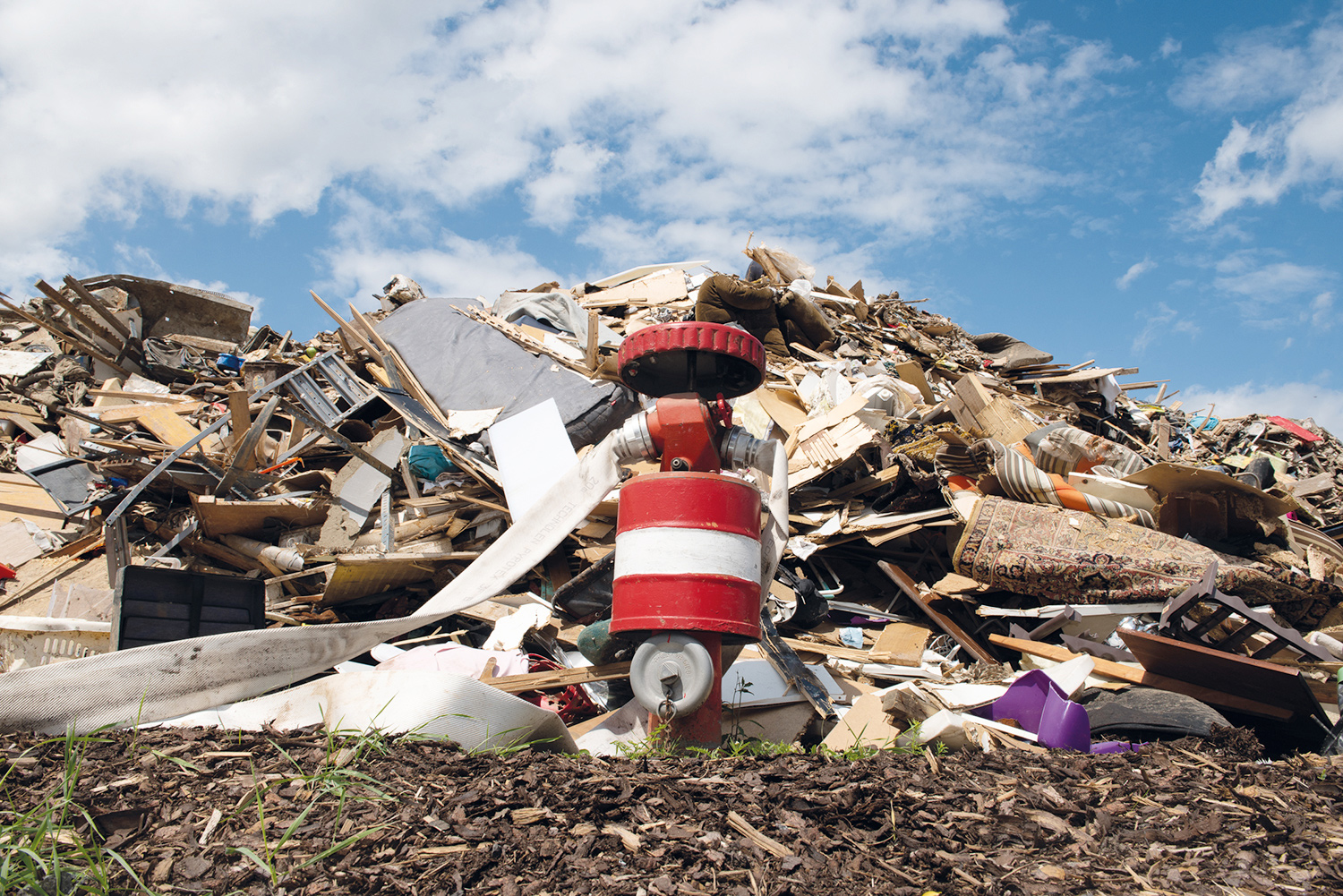
No bottlenecks at the incineration plants
Such questions would have been superfluous if a large part of those almost 100,000 tonnes had been safely incinerated at waste-to-energy (WtE) plants – something that would have helped boost energy production and prevented emissions of methane, a gas that is around 25 times more damaging than the much discussed CO2. And if the remaining volumes – bulky waste containing substantial amounts of wood, metal and other recyclable materials – had been sent on to the circular economy to be processed.
On 20 July 2021, one day before information about the certificate of exemption handed out by the Rhineland-Palatinate authorities became public knowledge, the ITAD [Interest group for thermal waste treatment plants in Germany] announced that the WtE plants had given a guarantee that they would be able to handle the huge amount of bulky waste generated by the floods. The whole of the waste management sector would work together closely to make sure there were sufficient capacities available for transporting, sorting and thermally treating the materials.
Further information followed not long after in the autumn of 2021: EUWID, a very well-informed, specialist news publisher, reported that a significant number of German WtE plants had noticed a fall in the volumes of commercial waste being sent to their businesses. No signs of plants running at full capacity, therefore. Experts observing the developments could not find a single reason for disposing of the bulky waste at the Eiterköpfe landfill, not even weeks or months after the floods.
Looking at the number of victims, the floods in July 2021 are presumed to be the worst natural disaster to hit Germany since the North Sea flood of 1962.
The question of money
Especially as landfill space is very scarce in many parts of Germany. Which is why it makes sense to keep any landfill space that is available free for the materials that are normally permitted to be stored there, i.e. mineral waste such as earth and more heavily contaminated construction waste. From an admittedly very narrow point of view, the situation at the Eiterköpfe landfill could be considered to be different from other landfills: in 2018, it had been given permission to considerably extend its storage space.
And so almost 100,000 tonnes of household and bulky waste have now been deposited there. Landfilling these materials certainly costs less than sending them to a WtE plant for incineration. However, over the years, the biomass in this waste – such as the wood – will gradually rot and emit methane, a gas that is highly damaging to our climate.
In these times of highly developed, well-functioning recycling technology and ever more stringent recycling and product design regulations, such a development is not good news for the waste management experts in this region – not even when having to cope with an exceptional situation.
Not well prepared
Thinking Circular’s report also came to a similar conclusion regarding the flood disaster management process during and after the event: “What must be noted is that the scale of the preparations drawn up to deal with such a disaster did not match the actual scale of the flood disaster. (…) “A timely integration into the crisis management would have been necessary, that would have ensured that the subject of waste management was looked into as well. A logistics concept to remove the waste would have been useful or simply just updates.” (Log No. 1)”.
